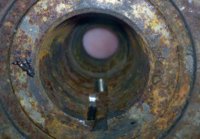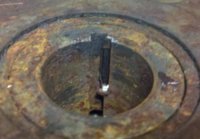cmyoch
XS650 Junkie
Ok. I posted in my previous thread that I replaced my entire charging system with a used and functional rotor and stator, a VR115 regulator, and the Radio Shack rectifier. The bike is now charging. I noticed on my old rotor when I pulled it that it was cut on the side of the keyway which has me thinking the PO torqued this rotor on without it properly aligned. I posted two pictures. My bike no longer idles which has me thinking that my timing is now off. I've looked through the manuals and I cannot understand the instructions well enough to dive right into timing. I assume I will need to make a slight adjustment but I am looking for the simplest timing instructions for dummies because I don't want to make matters worse by not knowing what I am doing. Are there any posts on here that really simplify the process? Videos and pictures too?
Thanks,
Craig
BTW, it's a '78 Special with points ignition.
Thanks,
Craig
BTW, it's a '78 Special with points ignition.


